The Growing Market Potential of Lithium Lawn Mower Batteries in the U.S.
Introduction As sustainability and operational efficiency become key priorities across landscaping operations in the United States, the shift from traditional lead-acid to lithium battery technologies is reshaping how lawn care equipment—particularly lawn mowers—is powered and maintained. The market for lithium lawn mower batteries is emerging not only as a replacement solution but as a performance upgrade, offering substantial value across residential, commercial, and municipal landscaping segments.
Lawn Mower Market Overview The American lawn mower market remains robust, supported by urban and suburban growth, a strong home ownership base, and expansive commercial landscaping services. While this market provides the foundation, the real transformation lies in what powers the equipment: more and more users are transitioning to electric mowers powered by lithium batteries.
Why Lithium Batteries Are Replacing Traditional Power Sources Lithium lawn mower batteries are rapidly gaining traction due to several key advantages over conventional battery technologies:
- Extended service life: Lithium batteries can last several seasons longer than lead-acid units, reducing replacement frequency.
- Consistent power delivery: Maintains steady output throughout the charge cycle, avoiding power dips during operation.
- Lightweight design: Easier integration into mower designs and improved user ergonomics.
- Fast recharging: Less downtime, especially crucial for commercial operators.
- Low maintenance: Requires no fluid checks or equalization charges.
These factors make lithium batteries more than just a substitute—they’re a functional upgrade, particularly attractive to professionals aiming to streamline fleet operations and minimize service interruptions.
Market Drivers for Lithium Lawn Mower Batteries
- Battery Replacement Cycles: The standard replacement cycle for lithium batteries ranges from 3–5 years depending on usage intensity. As electric mowers continue to penetrate the market, the replacement segment is expected to grow correspondingly.
- Rising Aftermarket Demand: Existing users of battery-powered lawn mowers—especially commercial users—are now reaching replacement timelines for their original batteries, fueling aftermarket demand for reliable lithium replacements. This trend reflects broader shifts seen across the america batteries industry, where long-term performance and lifecycle value are becoming central purchasing criteria.
- Environmental and Noise Regulations: State-level mandates and municipal policies are accelerating the phase-out of gas-powered and high-emission equipment, making lithium solutions more attractive.
- Operational Efficiency: Professional landscapers are increasingly focused on maximizing uptime and minimizing operating costs. Lithium battery systems help achieve these goals by reducing charging times and extending daily usability.
Challenges in the Transition to Lithium
- Initial Cost Perception: The higher upfront cost of lithium batteries can be a barrier, particularly for small businesses without clear cost-benefit expectations.
- Compatibility Concerns: Ensuring the battery matches the mower’s specifications can be complex due to varying form factors and electrical requirements.
- Battery Recycling Infrastructure: Proper end-of-life management requires better public awareness and collection systems for lithium batteries.
Future Outlook With over a million battery-powered lawn mowers already in circulation across the U.S., and many nearing battery replacement age, the lithium battery market stands on the brink of rapid expansion. The benefits of performance, reliability, and lower total cost of ownership are expected to drive repeat purchases and influence OEM design standards.
Fleet managers, dealers, and distributors who understand the replacement cycles, sizing requirements, and compatibility issues will be best positioned to serve this expanding segment.


